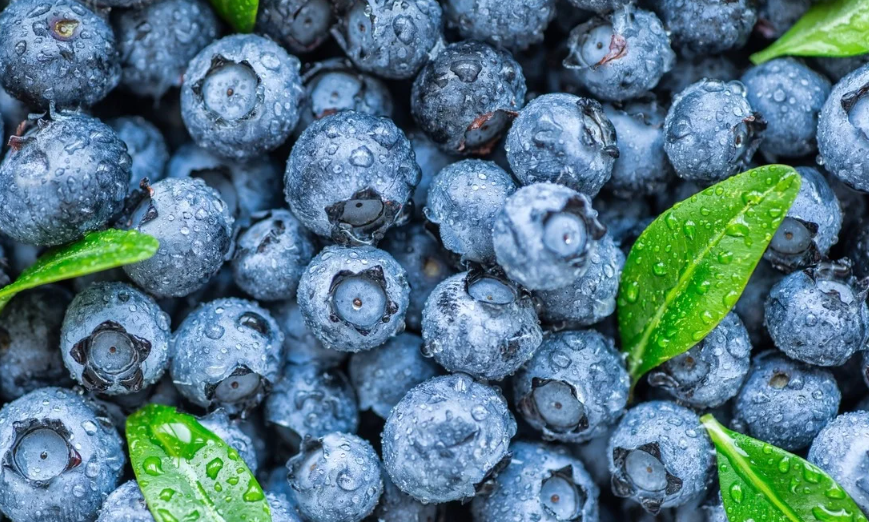
Blueberries are native to North America, where they have been consumed by Native Americans for centuries. They were first cultivated commercially in the early 20th century. Today, they are grown in various regions around the world, including North America, South America, Europe, and Asia.
Blueberries grow on low creeping shrubs or tall erect bushes, depending upon variety. The small round berries can range in size from 5-16 millimeters in diameter. They first appear green, but ripen into a deep shade of dusty blue. They are available year-round with a peak season in the summer.
Blueberries have a sweet and woodsy flavor with an acidity that can vary depending upon growing conditions. Long sunny days and warm temperatures develop a higher sugar content, while cooler temperatures and shorter days with limited sunlight increase acidity. After harvest some plants lose their leaves while other varieties retain their foliage year-round, becoming a colorful mix bronze, red and purple in the autumn.
Blueberries are botanically classified within the Vaccinium genus, along with cranberries and lingonberries. Though there are thirteen different species of Blueberries, the most commonly recognized are: Highbush blueberries (Vaccinium corymbosum) commonly grown in temperate climates. Lowbush blueberries (Vaccinium angustifolium) are native to colder regions and are often grown in the wild. Rabbiteye blueberries (Vaccinium virgatum) are native to the southeastern United States and are adapted to warmer climates.
Types & Cultivars
Northern highbush
These are the most common type of blueberry grown, and they thrive in cold climates with long winters. They require a lot of chilling hours (between 800 and 1000) to produce fruit. Northern highbush blueberries are known for their large, sweet berries.
Cultivars of Northern Highbush
- Bluecrop
- Bluegold
- Blueray
- Duke
- Elliot
- Hardyblue
- Jersey
- Legacy
- Patriot
- Rubel
Southern highbush
Southern highbush varieties are a type of blueberry that are well-suited to warmer climates, such as those found in the southern United States. They are a hybrid of northern highbush and native southern blueberry species. They require fewer chilling hours (between 400 and 700) to produce fruit. Southern highbush blueberries are also known for their large, sweet berries.
Cultivars of Southern Highbush
- Sunshine Blue
- Bluejean
- Sharpblue
- Pamlico
- Suziblue
- Southern Splendor
- Misty
- Oneal
- Ozarkblue
- Emerald
Rabbiteye
These blueberries are native to the southeastern United States, and they are well-suited for hot, humid climates. They are resistant to many diseases and pests, and they can tolerate a wider range of soil conditions than other types of blueberries. Rabbiteye blueberries have a slightly tart flavor, but they are still very delicious.
Cultivars of Rabbiteye
- Premier
- Brightwell
- Austin
- Ochlockonee
- Powderblue
- Southland
- Tifblue
- Climax
- Centurion
- Alapaha
- Krewer
Lowbush
These are also called wild blueberries, and they are native to North America. They are smaller than other types of blueberries, but they have a more concentrated flavor. They are often used in jams and jellies. These varieties are grown in USDA Hardiness Zones 2 to 8 and are well-suited for very cold climates.
Varieties of Lowbush
- Fundy
- Cargo
- Bundle
- Cumberland
- Jonesboro
- Pretty Yellow
- Spring
- Verde
Half-high
Half-high blueberry varieties are a hybrid cross between lowbush and highbush blueberries. They are typically smaller than highbush blueberries, growing up to 4 feet tall, but are more cold-tolerant and have a longer fruiting season. Half-high blueberries are a good choice for gardeners who have limited space.
Cultivars of Half-high
- Toro
- Polaris
- Patriot
- St. Cloud
- Northland
- Chippewa
- Northcountry
- Northblue
- Tophat